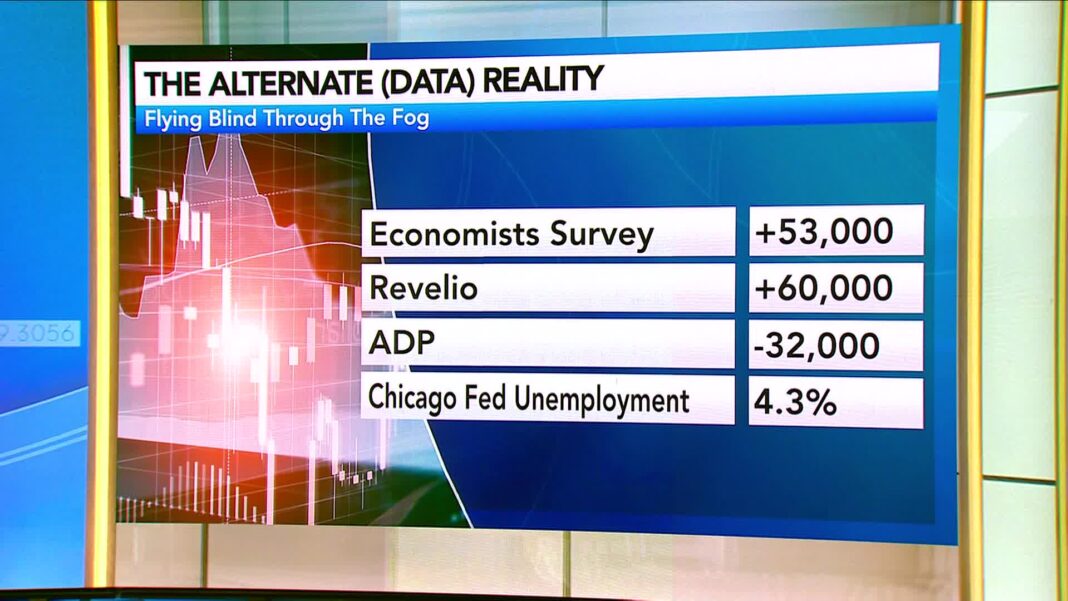The Impact of the Government Shutdown on Employment Data
On October 3rd, 2025, the anticipation surrounding the release of the monthly U.S. jobs report was met with disappointment as the ongoing government shutdown halted its publication. This situation has many investors, economists, and analysts on edge, speculating about the implications for the labor market and the broader economy. Despite this setback, various economic indicators provide insights worth analyzing.
Context of the Government Shutdown
Government shutdowns in the United States are not new, but their implications for economic monitoring are profound. With federal agencies closed, important data releases, such as the jobs report, can falter. The Bureau of Labor Statistics (BLS), which publishes the jobs report, relies on timely government operations to compile and release its data accurately. The absence of this crucial report means investors are left to interpret other economic signals that might hint at the state of employment and economic health.
Signs of Labor Market Slowdown
Recent reports leading up to the shutdown have indicated trends that suggest a slowing labor market. For many, a tight job market is often accompanied by aggressive hiring practices. However, signs of sluggish hiring trends have emerged, raising concerns among economists. Companies are displaying caution in their hiring practices, which can stem from various factors such as economic uncertainty, changing consumer demands, or shifts in business strategies.
Limited Layoffs and Modest Pay Gains
Amid the hiring slowdown, one positive note has been the limited layoffs reported across various sectors. Companies appear hesitant to let go of employees, indicating a desire to retain talent even during uncertain times. This behavior can be attributed to the challenges of replacing skilled workers in a competitive market. Yet, alongside limited layoffs comes a concerning trend: modest pay gains. While employees desire wage increases, the growth in compensation has not kept pace with inflation or rising living costs, leading to questions about consumer purchasing power moving forward.
Easing Demand for Workers
One crucial observation within the current employment landscape is the easing demand for workers. As businesses recalibrate their growth projections amid economic turbulence, various industries report a decline in job openings. This decline suggests that the fervent demand for labor seen in previous years may be leveling off, signaling a possible shift toward a more normalized or even contracting labor market. The eagerness from employers to onboard new talent is subdued, reflecting a cautious approach to future investments in human capital.
Insights from Economic Analysts
Bloomberg’s Michael McKee, a seasoned economic reporter, highlights these key signals that have emerged in light of the reports preceding the government shutdown. Analysts are paying close attention to how these trends interplay with consumer confidence, business investments, and overall economic growth. With many businesses tentatively holding off on expansion efforts, the concerns surrounding a potential economic slowdown loom larger.
The Path Ahead for Wall Street and Investors
With the absence of the jobs report, Wall Street is left navigating a sea of uncertainty. Major indexes often respond to labor market reports as critical indicators of economic vitality. Thus, the ongoing government shutdown poses a risk not just to transparency within the job market but also to investor sentiment. As earnings season approaches, investors will be particularly vigilant, watching for other economic data releases and corporate earnings reports that could shed light on companies’ labor strategies.
Looking for Alternatives
In the absence of the jobs report, economic observers are turning to alternative data sources to gauge labor market conditions. Reports from private-sector payroll companies, like ADP or staffing firms, can provide supplementary insights into current hiring trends. Additionally, unemployment claims data may also offer a glimpse into whether workers are being laid off or if new job openings are materializing.
While the government shutdown hampers the release of official employment data, it does not entirely close the window on understanding the complexities of today’s labor market. This evolving landscape continues to foster discussions about the balance between economic recovery and the realities of employment that will shape policies and business strategies in the near future.



